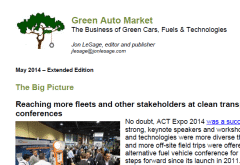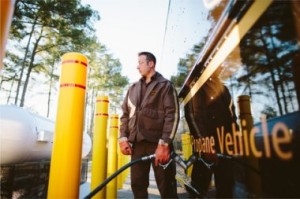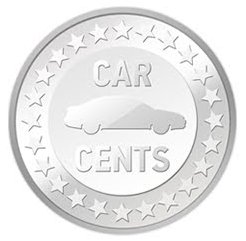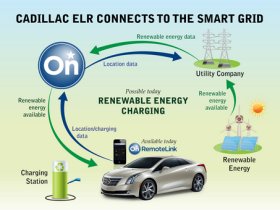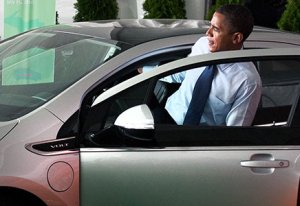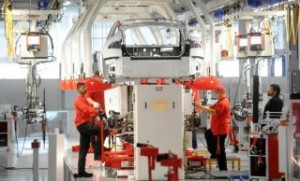 With Toyota Motor Corp. announcing its plan to shut down at its US headquarters in Torrance, Calif., and then moving to Texas by 2017, Tesla Motors will become the largest auto industry employer in California. Tesla now employs more than 6,000 people in the state, mainly at its production plant in Fremont. Tesla will add at least 500 more workers by year’s end in California, according to a company spokesman……. Tesla CEO Elon Musk received more media attention last week on where “gigafactories” are headed. Speaking at the World Energy Innovation Forum, Musk said the need for lower-cost batteries for autos and power storage will bring hundreds of these advanced lithium battery plants like the one Tesla is planning with fellow investors. Musk thinks cost will be reduced for these lithium-ion cells initially by 30%, but that will only get better. In other news, Tesla is getting a perhaps temporary break in the state of Missouri in the franchised dealers vs. Tesla online sales battle. Legislators have put a bill on hold until its reintroduced next year.
With Toyota Motor Corp. announcing its plan to shut down at its US headquarters in Torrance, Calif., and then moving to Texas by 2017, Tesla Motors will become the largest auto industry employer in California. Tesla now employs more than 6,000 people in the state, mainly at its production plant in Fremont. Tesla will add at least 500 more workers by year’s end in California, according to a company spokesman……. Tesla CEO Elon Musk received more media attention last week on where “gigafactories” are headed. Speaking at the World Energy Innovation Forum, Musk said the need for lower-cost batteries for autos and power storage will bring hundreds of these advanced lithium battery plants like the one Tesla is planning with fellow investors. Musk thinks cost will be reduced for these lithium-ion cells initially by 30%, but that will only get better. In other news, Tesla is getting a perhaps temporary break in the state of Missouri in the franchised dealers vs. Tesla online sales battle. Legislators have put a bill on hold until its reintroduced next year.
And in other clean transportation news…….
- Japanese automakers have formed a consortium similar to what’s been implemented in Europe – taking a big step forward in fuel-efficient powertrains. Toyota, Nissan, Honda, Mazda, Mitsubishi, Daihatsu, Suzuki, and Fuji Heavy Industries (which makes Subaru vehicles) have pooled resources to jointly produce gasoline and diesel engines that are 30% more fuel efficient by 2020. It’s taking place through a newly created organization, Research Association of Automotive Internal Combustion Engines. The Japanese government is putting up half the budget, which combined totals out to 1 billion yen ($9.9 million).
- Check out “Forty One New Models Coming,” an Automotive Digest video featuring AOL Automotive’s Steve Sturm, at the thinkLA, Automotive Breakfast 2014. Sturm thinks that hydrogen fuel cell vehicles rolling out in the next year will have a role to play in new vehicle sales.
- Fisker Automotive will be assembling its cars in the US and maybe eventually in China, said Lu Guanqiu, chairman and founder of Fisker’s post-bankruptcy owner, major Chinese auto parts maker Wanxiang Group Corp. The Fisker Karmas out on the roads today were built at an assembly plant in Finland. Lu sounds very serious about building the next wave of Fisker plug-in hybrids. “I’ll put every cent that Wanxiang earns into making electric vehicles,” Lu said. “I’ll burn as much cash as it takes to succeed, or until Wanxiang goes bust.”
- Last year’s controversy has subsided over Terry McAuliffe’s GreenTech Automotive company being the subject of a Securities and Exchange Commission for promises made by the electric carmaker while soliciting overseas investors. Its merger with VL Automotive is helping GreenTech Automotive to express optimism about delivery of electric city cars to the Chinese market. McAuliffe, now serving as governor of Virginia, started up GreenTech about five years ago. GreenTech President and CEO Charles Wang last year became embroiled in the governor’s race about the deal making McAuliffe had been part of.
- In this day of five million General Motors recalls being announced, 276 Nissan Leafs is a mere pittance. Nissan is recalling 211 vehicles in the US and 65 in Canada to check for a problem with its front structural member assembly. The risk of injury during a crash goes up for these models as the assembly may be missing welds, which affects structural integrity during a crash. Nissan is notifying customers and their dealers to bring in their Leafs for inspection.
- Lobbying for higher blends of ethanol at the national and state level is continuing. Legislators in Illinois have heard from a racing celebrity who supports the alternative fuel. NASCAR driver Kenny Wallace. “I’m here to let everyone know not to worry about it,” Wallace said. “I’ve got a lot of knowledge and it’s a clean-burning fuel. It’s good for the environment and it cuts down on emissions.” Wallace has been working with the Illinois Corn Growers Association to advocate blended fuels. Illinois currently provides tax credits for fuel with a 10% ethanol blend; the association wants to see the credit carry over to fuels with a 15% blend.
- The 2015 Chevy Spark EV will have an entirely new battery pack. General Motors will bring assembly of the electric Spark’s battery in-house to the Brownstown, Michigan, plant that already builds batteries for the Chevrolet Volt, Opel/Vauxhall Ampera, and Cadillac ELR. The first 1,000-plus batteries were assembled by Compact Power Inc. at a different Michigan plant, then shipped to South Korea for installation in the Spark EV.
- AT&T has deployed its 8,000th compressed natural gas (CNG) vehicle; the company is more than half way there to fulfill its 10-year, $565 million commitment to add approximately 15,000 alternative fuel vehicles to its fleet by end of year 2018. The 8,000th CNG vehicle – a 2014 Chevy Express van manufactured in Wentzville, Missouri – was delivered to a work center in St. Louis, Missouri, and will be used to provide entertainment and communications services in the St. Louis metropolitan area.
- IHS Automotive sees EV sales performing stronger than early hybrids: IHS Automotive has become the leading market analyst on auto industry trends through its acquisition of Polk and all of Polk’s vehicle registration data. A new report by IHS Automotive says that despite the limitations that electric vehicles (EVs) have faced in its early development and market availability, these models have still sold better than hybrids did in the early years starting in 2001 with the Toyota Prius and Honda Civic and Insight. “Most EV drivers still own their first-generation electric vehicles,” said IHS Automotive analyst Ben Scott. “Furthermore, there have been insufficient product offerings to effectively legitimize the market and show to consumers that EVs and plug-in hybrid electric vehicles (PHEVs) represent the way of the future.” The IHS Automotive study also says that early expectations and perceptions for EVs may been too lofty, which had a negative impact. It’s lead some people to think of early EVs as failures for not meeting their inflated expectations despite these models’ relative sales success in the global market.

